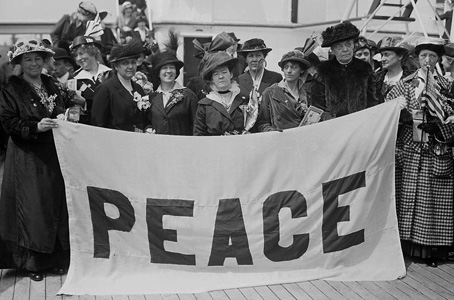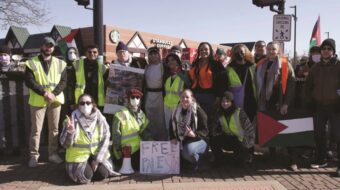
On October 9, 1874, Mary Heaton Vorse was born in New York. She became a muckraking labor journalist and wrote eyewitness accounts of many important labor battles of her day.
After reporting on the Loray Mill strike in Gastonia, North Carolina, in 1929, she wrote her famous novel, “Strike!”
Gastonia
Mill work was extremely dangerous and dirty. “I used to tend forty-eight looms,” complained a weaver in 1929, “while under the stretch-out I have to tend ninety looms and I couldn’t do it. Three years ago I was makin’ over $19 a week. Now I make $17.70.” By the late 1920’s some mill workers’ wages sank as low as $5 a week.
Many of the mill workers were women. Often the workdays were so long that the women, who made up a large percentage of the workers, were rarely home for their children.
Upon hearing about the conditions in the Loray Mill, the National Textile Workers Union (NTWU) began focusing his attention on Gastonia.
In April of 1929, close to 1,800 textile workers from the Loray Mill in Gastonia struck to protest the firing of five union organizers. Members of the left-led National Textile Workers Union, pursuing their right to organize, ran into what was a particular North Carolina brand of repression. Strikers were driven out of their mill-owned homes. Thugs were deputized by the local police to harass, beat up and arrest strikers. In June the company/state violence culminated in an armed attack on a peaceful picket line made up mostly of women and children. Then the “deputies” and police officers charged into a tent city of evicted strikers, where shots were fired and the Gastonia police chief was shot. “Gastonia,” a symbol of capital’s fierce resistance to union organization, became a battle cry for labor around the country and the world.
Ella Mae Wiggins
On Sept. 14 in 1929, during the strike, National Textile Workers Union members were ambushed by a group of armed men.
The group – consisting of local vigilantes and a sheriff’s deputy – attacked the workers on their way back home from a meeting. They proceeded to force mill striker and songwriter Ella Mae Wiggins‘ pickup truck off the road, and shot the 29 year-old mother of nine in the chest, killing her.
Wiggins was not African American, but an Anglo woman who was targeted because she stood up for full integration Though there were around 50 witnesses during the assault, five of the attackers were arrested – but all acquitted of her murder.
Honors for Mary Heaton Vorse
Four years before her death, the 88-year old Mary Heaton Vorse received the first UAW Social Justice Award, with former first lady Eleanor Roosevelt and novelist Upton Sinclair looking on to share her honor. Vorse was feted for her work as one of the most important labor journalists of the 1920s and 1930s.
In addition to her memoir written in 1935, Vorse participated in an oral history project at Columbia University in 1957, an interview that has been transcribed and microfilmed by the university.
Vorse was active in the fight against militarism and American entry into World War I and was a founding member of the Woman’s Peace Party in January 1915. She was chosen as the delegate of the New York Woman Suffrage Party to an International Women’s Peace Congress held in The Hague at the end of April 1915, traveling aboard the MS Noordam through mine-strewn waters to attend.
Newspapers and magazines she wrote for included the New York Post, Harper’s Weekly, New Masses, as well as various news services.
She participated in and reported on the Lawrence textile strike, the steel strike of 1919, the textile workers strike of 1934, and coal strikes in Harlan County, Kentucky.
From 1919 until 1923, Vorse was in a relationship with the radical political cartoonist and communist Robert Minor.
Mary Heaton Vorse is sometimes remembered anecdotally as the inspiration for the fictional character “Mary French” in John Dos Passos‘ trilogy USA.
Photo: Delegates to the 1915 Women’s Peace Conference in The Hague, aboard the MS Noordam. April 1915.
Editor’s note on North Carolina today
The broad based “Moral Monday” protests taking place in North Carolina this year have been covered in several People’s World articles:
https://www.peoplesworld.org/north-carolina-moral-monday-protests-battle-right-wing-agenda/
https://www.peoplesworld.org/north-carolina-crowd-roars-back-at-governor-wrong-wrong-wrong/
https://www.peoplesworld.org/jailed-for-justice-at-july-8th-s-moral-monday/
https://www.peoplesworld.org/moral-mondays-and-misestimated-mandates/












Comments